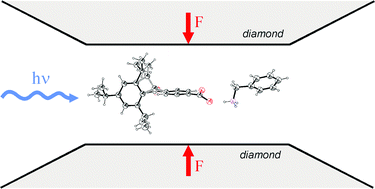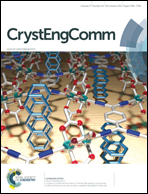Structural transformations in crystals induced by radiation and pressure. Part 2. The path of a photochemical intramolecular reaction in crystals at different pressures†
Abstract
Studies have revealed how pressure influences the path of one photochemical reaction in crystals. The single-crystal-to-single-crystal Norrish–Yang reaction of 4-(2,4,6-triisopropylbenzoyl)benzoate benzylammonium, compound 1, was studied at high pressures of 0.3 and 0.9 GPa. X-ray structure analysis was used in order to monitor the kinetics of the reaction and the structural changes induced by UV radiation and pressure. The reaction rate is lower at higher pressure: the rate constants are 5.3 × 10−5 s−1 and 4.3 × 10−6 s−1 at 0.3 and 0.9 GPa, respectively. This was rationalized by: (a) the decrease in the size of voids near the reaction centre and in the unit cell with pressure, (b) the increase of intermolecular interactions in which the photoreactive o-isopropyl group takes part along with pressure and (c) the structural changes brought about by the photochemical reaction itself, for example, the increase of the unit cell volume. Pressure significantly reduced these structural changes and even halted some of them.


 Please wait while we load your content...
Please wait while we load your content...